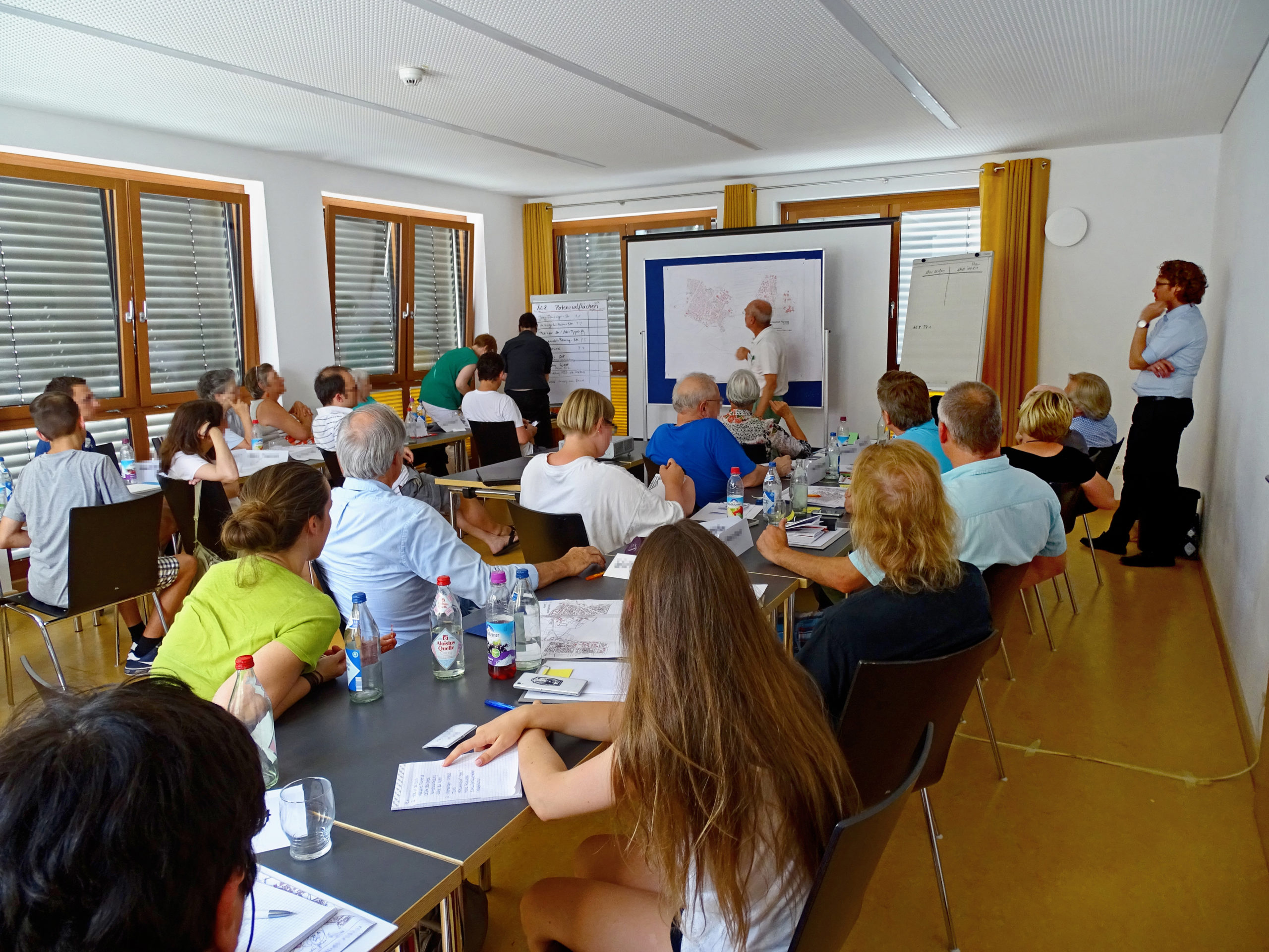
What is a planning cell?
The planning cell was developed by Peter C. Dienel in the early 1970s and has been used extensively ever since. Planning cells are intended to enable citizens to assume their roles as responsible members of society and to contribute their respective skills and knowledge to solve existing problems.
A planning cell consists of a group of about 25 randomly selected citizens who are released from their workday duties for three or four days in order to work in groups to develop recommendations for an existing issue.
Each day is divided into four work units, each of which is dedicated to a thematic focus. The results of their consultations are summarized as recommendations in a so-called citizen’s report and made available to political decision-makers as a basis for consultation.
By randomly selecting the participants, people with different knowledge, personal backgrounds and opinions come together in a planning cell. Women and men are represented according to their share of the population, as are the different age groups. In order to increase the diversity of the opinions brought in, several planning cells usually work in parallel on the same topic. In their consultations, the participants are supported by a competent process support team, which ensures that the planning cell runs smoothly.
At the beginning of each thematic work unit, they receive the information necessary for developing recommendations from experts and representatives of the relevant interest groups. In their selection, care is taken to ensure that as many relevant opinions as possible are represented.
Subsequently, the participants discuss detailed problems in five unmoderated small groups of five people each and develop joint recommendations. The process is open-ended. The experts and stakeholders are not present at the citizens’ assessments. Constantly changing small groups guarantee fair discussion situations in which no opinion leadership can develop. The last day of the planning cell is used to summarize the results of the previous days, reflect on them again and formulate recommendations.
After completion of the planning cell, the recommendations are summarized by the neutral implementing agency in a citizen’s report.
In recent years, the procedure has been successfully applied to a wide variety of thematic issues at both municipal and supra-regional level.
Literature:
Dienel, Hans-Liudger: Vergne, A.; Franzl, K.; Fuhrmann, R.D.; Lietzmann, H.J. (Hg.): Die Qualität von Bürgerbeteiligungsver-fahren. Evaluation und Sicherung von Standards am Beispiel von Planungszellen und Bürgergutachten. München: oekom, 2014
Dienel, Hans-Liudger: Public Participation Procedures in Germany: An Overview. In: Ping Liu/Rudolf Traub-Merz (Hg.): Public Participation in Local Decision-Making: China and Germany. Shanghai: Shanghai Academy of Social Sciences Press, 2009
Dienel, Hans-Liudger: Citizens‘ Juries and Planning Cells: Deliberative Democratic Processes for Consultation and Conflictual Problems. In: Ping Liu/Rudolf Traub-Merz (Hg.): Public Participation in Local Decision-Making: China and Germany. Shanghai: Shanghai Academy of Social Sciences Press, 2009
Dienel, Peter C.: Demokratisch, Praktisch, Gut. Merkmale, Wirkungen und Perspektiven von Planungszellen und Bürgergutachten. Bonn: Dietz Verlag 2009
Dienel, Peter C.: Die Planungszelle. Der Bürger als Chance. Wiesbaden: Westdeutscher Verlag, 2002 (Standardwerk, 5 Aufl. mit Statusreport)
Reinert, Adrian: Mobilisierung der Kompetenz von Laien – Die Methode Planungszelle/Bürgergutachten. In: Apel, H./Dernbach, D./Ködelpeter, Th. /Weinbrenner P. (Hrsg.), Wege zur Zukunftsfähigkeit – ein Methodenhandbuch, Stiftung MITARBEIT; Bonn, 1998